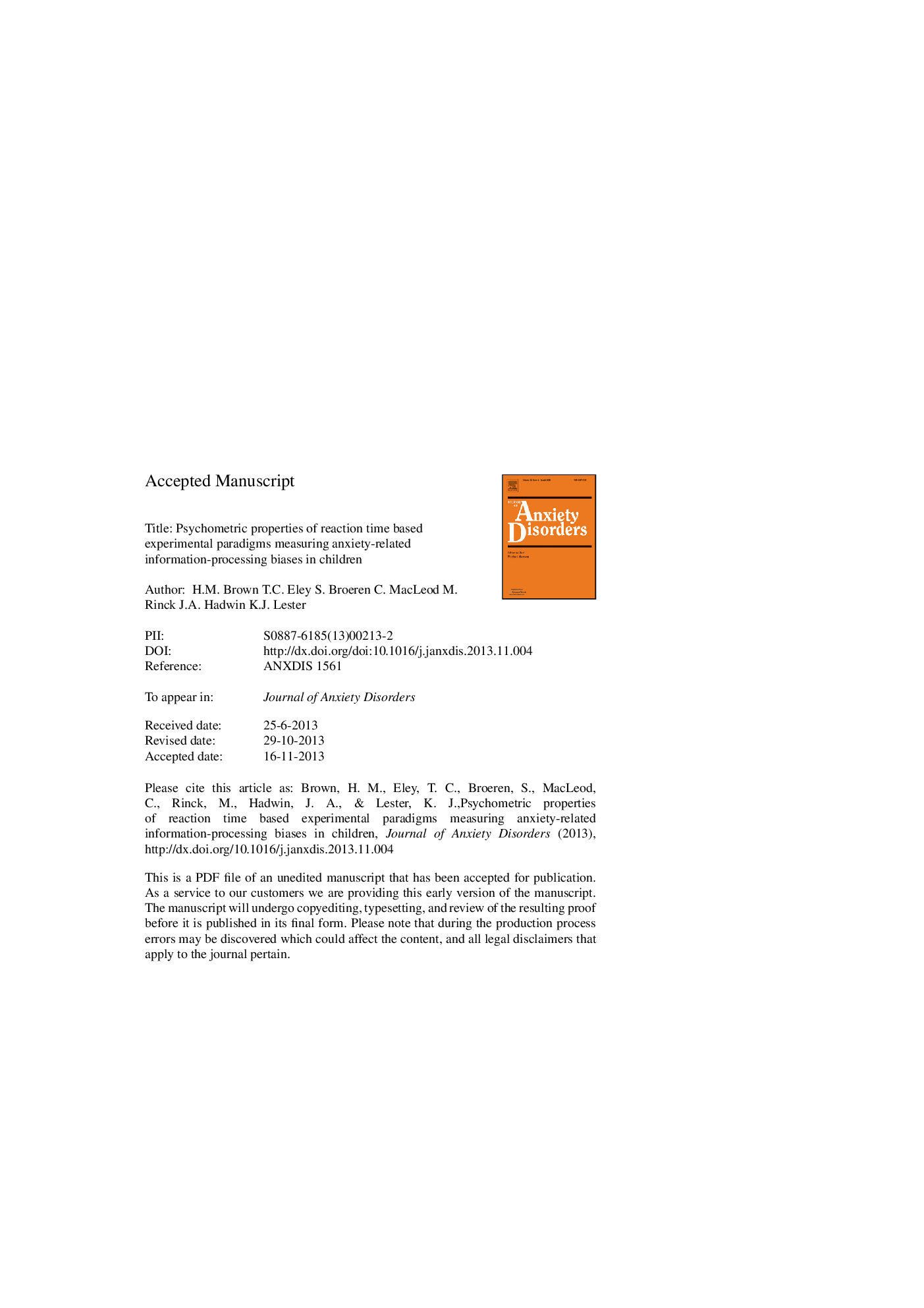| Article ID | Journal | Published Year | Pages | File Type |
|---|---|---|---|---|
| 10447654 | Journal of Anxiety Disorders | 2014 | 43 Pages |
Abstract
Theoretical frameworks highlight the importance of threat-related information-processing biases for understanding the emergence of anxiety in childhood. The psychometric properties of several tasks measuring these biases and their associations with anxiety were examined in an unselected sample of 9-year-old children (NÂ =Â 155). In each task, threat bias was assessed using bias scores reflecting task performance on threat versus non-threat conditions. Reliability was assessed using split-half and test-retest correlations of mean reaction times (RTs), accuracy and bias indices. Convergence between measures was also examined. Mean RTs showed substantial split-half and test-retest correlations. Bias score reliability coefficients were near zero and non-significant, suggesting poor reliability in children of this age. Additionally, associations between bias scores and anxiety were weak and inconsistent and performance between tasks showed little convergence. Bias scores from RT based paradigms in the current study lacked adequate psychometric properties for measuring individual differences in anxiety-related information-processing in children.
Related Topics
Health Sciences
Medicine and Dentistry
Psychiatry and Mental Health
Authors
H.M. Brown, T.C. Eley, S. Broeren, C. MacLeod, M. Rinck, J.A. Hadwin, K.J. Lester,
